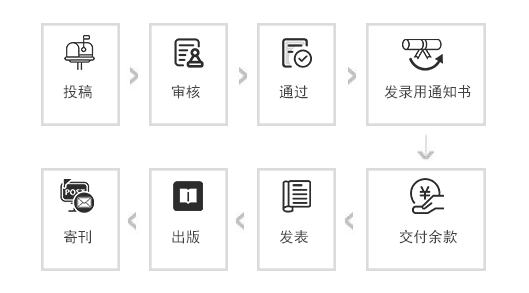Environmental Education Research



- 中国知网数据库(CNKI)全文收录期刊
- 中国核心期刊(遴选)数据库收录期刊
- 中国万方数据库全文收录期刊
- 中国维普科技期刊数据库收录期刊
- 中国龙源数据库全文收录期刊
- 中国期刊网全文收录期刊



中国高校科技期刊研究会第9次会员代表大会在北京召开,中宣部出版局副局长张怀海、教育部科学技术与信息化司一级巡视员张国辉等领导出席会议并发表..
英文简介:The mission of Environmental Education Research is to advance research-based and scholarly understandings of environmental and sustainability education. The journal achieves this by publishing peer reviewed research and scholarship on all aspects of environmental education, sourced from around the world and diverse schools of thought and practice in inquiry.The editorial board welcomes submission of original, high quality and innovative papers derived from empirical, philosophical, practice-or policy-related investigations of environmental and sustainability education. The journal’s primary audiences are those working in or with the broad fields of education and educational research, and environmental studies, and relevant interdisciplinary or subdisciplinary aspects.Manuscripts should be scholarly, analytical and critical. Ideas discussed and advanced should be transferable to other educational systems and cultures (where possible), and papers should be accessible to an international readership.Advice, guidelines and templates for preparing manuscripts of a range of types are available in the Instructions for Authors and Environmental Education Research general guidelines , including on authorship and contributorship, and other facets of publishing ethics.The most cited and most read papers in the journal tend to be literature reviews, innovative empirical and theoretical studies, and analyses of key concepts in and approaches to environmental and sustainability education. In supporting the mission and aims of the journal, and to contribute to scholarly conversation and debate in this field, the editorial board strongly encourages authors to consult the scholarly literature in this and cognate fields when positioning and advancing arguments.中文简介:(来自Google、百度翻译)环境教育研究的使命是促进对环境和可持续发展教育的研究性和学术性理解。该杂志通过出版来自世界各地的同行评议研究和环境教育的各个方面的奖学金,以及不同学派的思想和实践探索,实现了这一目标。编辑委员会欢迎提交原创、高质量和创新的论文,这些论文来自对环境和可持续发展教育的实证、哲学、实践或政策相关调查。该杂志的主要读者是那些从事或与教育和教育研究、环境研究以及相关跨学科或亚学科方面的广泛领域工作的人。手稿应具有学术性、分析性和批判性。讨论和提出的意见应可转移到其他教育制度和文化(如有可能),论文应向国际读者开放。《作者指南》和《环境教育研究一般指南》(包括关于作者和贡献者身份的指南)以及出版伦理的其他方面提供了编写各种类型的手稿的建议、指南和模板。期刊上被引用和阅读最多的论文往往是文献综述、创新的实证和理论研究,以及对环境和可持续教育的关键概念和方法的分析。为了支持期刊的使命和目标,并为该领域的学术对话和辩论做出贡献,编辑委员会强烈鼓励作者在定位和推进论点时参考该领域的学术文献和相关领域。










英文简介:The mission of Environmental Education Research is to advance research-based and scholarly understandings of environmental and sustainability education. The journal achieves this by publishing peer reviewed research and scholarship on all aspects of environmental education, sourced from around the world and diverse schools of thought and practice in inquiry.The editorial board welcomes submission of original, high quality and innovative papers derived from empirical, philosophical, practice-or policy-related investigations of environmental and sustainability education. The journal’s primary audiences are those working in or with the broad fields of education and educational research, and environmental studies, and relevant interdisciplinary or subdisciplinary aspects.Manuscripts should be scholarly, analytical and critical. Ideas discussed and advanced should be transferable to other educational systems and cultures (where possible), and papers should be accessible to an international readership.Advice, guidelines and templates for preparing manuscripts of a range of types are available in the Instructions for Authors and Environmental Education Research general guidelines , including on authorship and contributorship, and other facets of publishing ethics.The most cited and most read papers in the journal tend to be literature reviews, innovative empirical and theoretical studies, and analyses of key concepts in and approaches to environmental and sustainability education. In supporting the mission and aims of the journal, and to contribute to scholarly conversation and debate in this field, the editorial board strongly encourages authors to consult the scholarly literature in this and cognate fields when positioning and advancing arguments.中文简介:(来自Google、百度翻译)环境教育研究的使命是促进对环境和可持续发展教育的研究性和学术性理解。该杂志通过出版来自世界各地的同行评议研究和环境教育的各个方面的奖学金,以及不同学派的思想和实践探索,实现了这一目标。编辑委员会欢迎提交原创、高质量和创新的论文,这些论文来自对环境和可持续发展教育的实证、哲学、实践或政策相关调查。该杂志的主要读者是那些从事或与教育和教育研究、环境研究以及相关跨学科或亚学科方面的广泛领域工作的人。手稿应具有学术性、分析性和批判性。讨论和提出的意见应可转移到其他教育制度和文化(如有可能),论文应向国际读者开放。《作者指南》和《环境教育研究一般指南》(包括关于作者和贡献者身份的指南)以及出版伦理的其他方面提供了编写各种类型的手稿的建议、指南和模板。期刊上被引用和阅读最多的论文往往是文献综述、创新的实证和理论研究,以及对环境和可持续教育的关键概念和方法的分析。为了支持期刊的使命和目标,并为该领域的学术对话和辩论做出贡献,编辑委员会强烈鼓励作者在定位和推进论点时参考该领域的学术文献和相关领域。
来稿要求:
论点新颖、论证严密、论据充足、文字精练。论文字数:5000字符-8000字符为宜,图表也要计算在内,不包括英文摘要关键词。
标 题:
文章标题要言简意赅,30字以内。作者署名:署真实姓名,注明作者单位、单位所在省市和邮政编码。摘 要:要用第三人称概括全文,300字以内。
关 键 词:
用3~8个关键词术语反映论文主题。专用符号:名词、术语、数字、计量单位、标点符号和数学符号等,必须符合国家标准;外文人名、地名和术语需译成中文。
图表格式:
文中插图与表格放在相应正文之后,分别按出现顺序用图1、图2或表1、表2统一编号。插图应为黑白色,其序号、标题及注释居中放在图的下方,表格的序号及标题置于表格上方,表注放在表格的下方(建议:由于篇幅限制,除核心期刊外尽量不用或少用图表)。
正文注释:
采用尾注形式,注释号①,②,③等标在相应正文右上角。
章节体例:
章节标题为:一级标题不编号,用黑体居中排,二级标题不编号,用楷体放在相应的文字段首与正文空一字格接排正文。 三级标题分别用1.2.3.顺序编号。文中接排标题用(1),(2)编号。
参考文献:
参考文献置于正文之后,近5年的不少于3条,用[1],[2]……顺序编号,如文章中有内容需要解释请用尾注形式。参考文献不全者不能进入审稿阶段。{参考文献格式如下:(1)图书:作者.书名(版本)[M].出版所在地: 出版社,出版年:(1)页码.
(2)期刊:作者.题目[J].期刊名,年,卷(期):页码.
(3)电子参考文献:作者.题目[OL].(文章的发表日期).[本文引用日期].作者简介:来稿者请附个人简介,内容包括姓名(出生年—),性别,籍贯,民族,学历,工作单位,职称,研究方向,通讯地址,联系电话及电子信箱。
一般情况下,您将在3个工作日内收到审稿结果。如文章有很强的时效性,请说明需要最晚刊发时间。
| 论文编号 | 作者姓名 | 论文题目 | 录用情况 |
|---|---|---|---|
| TG251-13579 | 韩丽炘 孟涛 温娟娟 刘晓琴 | 基于互联网的CBL+TBL教学法在病理学实验教学中的应用 | 已录用 |
| TG251-13681 | 邹隆强 杨清余 钟鸿路 李正南 陈 | 医学运动康复联合消肿止痛方治疗急性踝关节扭伤临床研究 | 已录用 |
| TG251-13794 | 林雨慧 陈霄雯 郑颖彦 朱永凯 贾 | 基于SWOT模型的儿童专科医院临床研究发展策略分析 | 已录用 |
| TG251-13762 | 郑鸿雁 | 重复经颅磁刺激治疗肝脾不调型功能性肛门直肠痛的临床研究 | 已录用 |
| TG251-13891 | 袁召1 赵会谢2 赵海深3 | 真武汤治疗阳虚水泛型慢性心力衰竭患者的临床研究 | 已录用 |
| TG251-13536 | 王杰1 张蕾蕾2 | 血脂和载脂蛋白水平与分化型甲状腺癌及其病理学特征的相关性探究 | 已录用 |
| GD24-5203 | 单一青 高鹏慧 姚瑶 | 思维导图护理对宫颈癌患者行腹腔镜术后康复的影响 | 已录用 |
| GD24-5217 | 林秀娟 梁静文 刘美仙 陈惠贤 | 加速康复外科管理模式在胸腔镜肺段切除术患者围手术期护理中的应用效果 | 已录用 |
| GD24-5213 | 杨素雯 何洁芳 陈妙霞 廖景升 | 健康行为改变整合理论对于宫颈癌晚期放疗患者依从性及自我效能的影响 | 已录用 |
| GD24-5199 | 杨月惠 王凤婷 | 个体护理计划在心脏瓣膜置换手术围手术期患者中的应用 | 已录用 |
邮箱:cnkibianjibu@163.com
QQ:
扫码联系: